In our first project, the conceptual project, we used our abstract thinking and communication skills to answer the question of how we can use unconventional forms to express ourselves.
The conceptual project emphasizes creative risks through the creation of poetry, music, art, animation, experimental film, and web production. Students are challenged to express their opinions through a personal aesthetic. Students use a variety of professional apps and equipment, including DSLR cameras, audio recorders, Adobe applications (notably Photoshop and Premiere Pro), Pro Tools, WordPress (how this site was created), and the ubiquitous Google Apps.
This has been a great project. Learning how to use these things combined with the great community here has been a blast. I am proud of some of these works, and hope you enjoy them.
Poem production
In our english class, we made two poems – a free verse poem based on a concept statement, and an ekphrastic poem, which is a poem in response to a piece of art. We then refined one of these poems (I chose my ekphrastic), made an intention statement, recorded it, and made a photo showcasing it.
Composing the poem itself was fairly easy – I had an idea when I saw the painting and just kinda ran with it. Making the audio production was kinda fun, aside from reading the intention statement – which is a whole paragraph. The photo I used for the poem, which you see here, is the artwork that inspired it, slightly edited to shift things around and make part of the poem that directly references an element in the painting concurrent with said element.

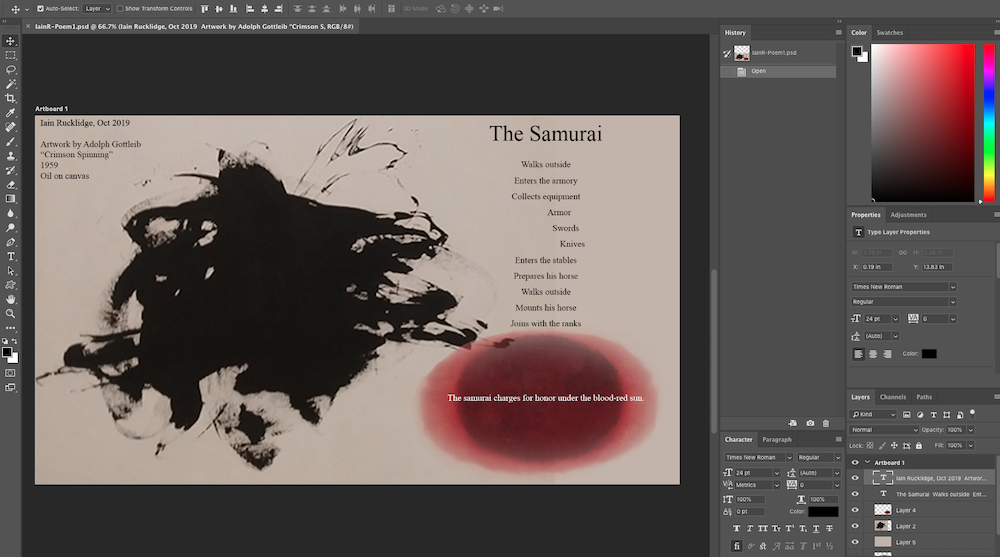
Photo Haiku
Earlier in the year, we made a haiku in English class, based off of a randomly-created concept statement. We then recorded it, and used Premiere Pro to make a video about it.
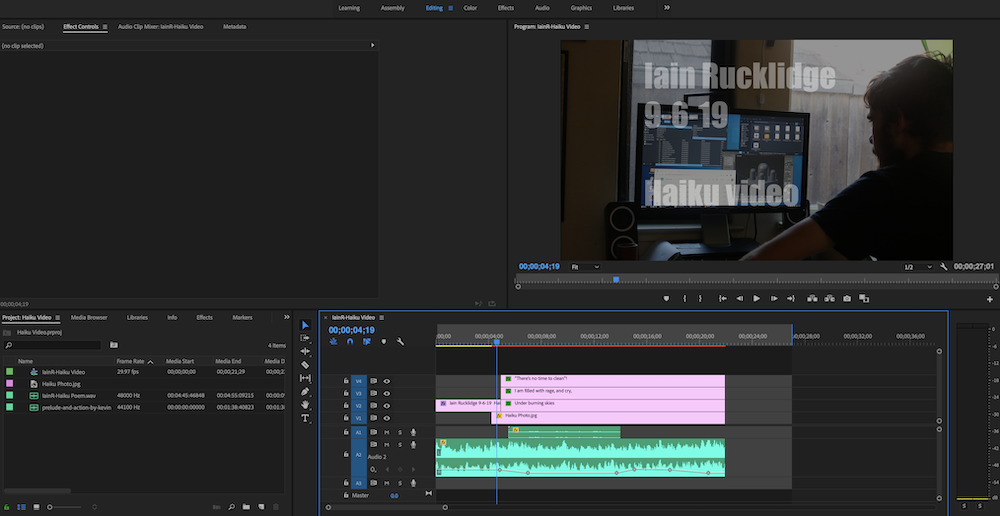
I liked using Premiere Pro, especially keyframing the text to come in at different times. Knowing how to use this will come in handy at some point in the future, as video is extremely important. The haiku itself was fine: not too hard to make, but I’m not too proud of it.
Elements & Principles of Art
For this assignment, we found pieces of art – photography, tradition art, and modern art – that showed each of the elements and principles of art. Personally, I didn’t like this assignment, but I did learn new things about art I would not have otherwise.

Animation
So far, in Animation we have been working entirely with traditional animation – not using digital drawing in any way, shape, or form. Our first assignment was the phenakistoscope – a wheel that is spun while held up to a mirror to produce the illusion of movement.
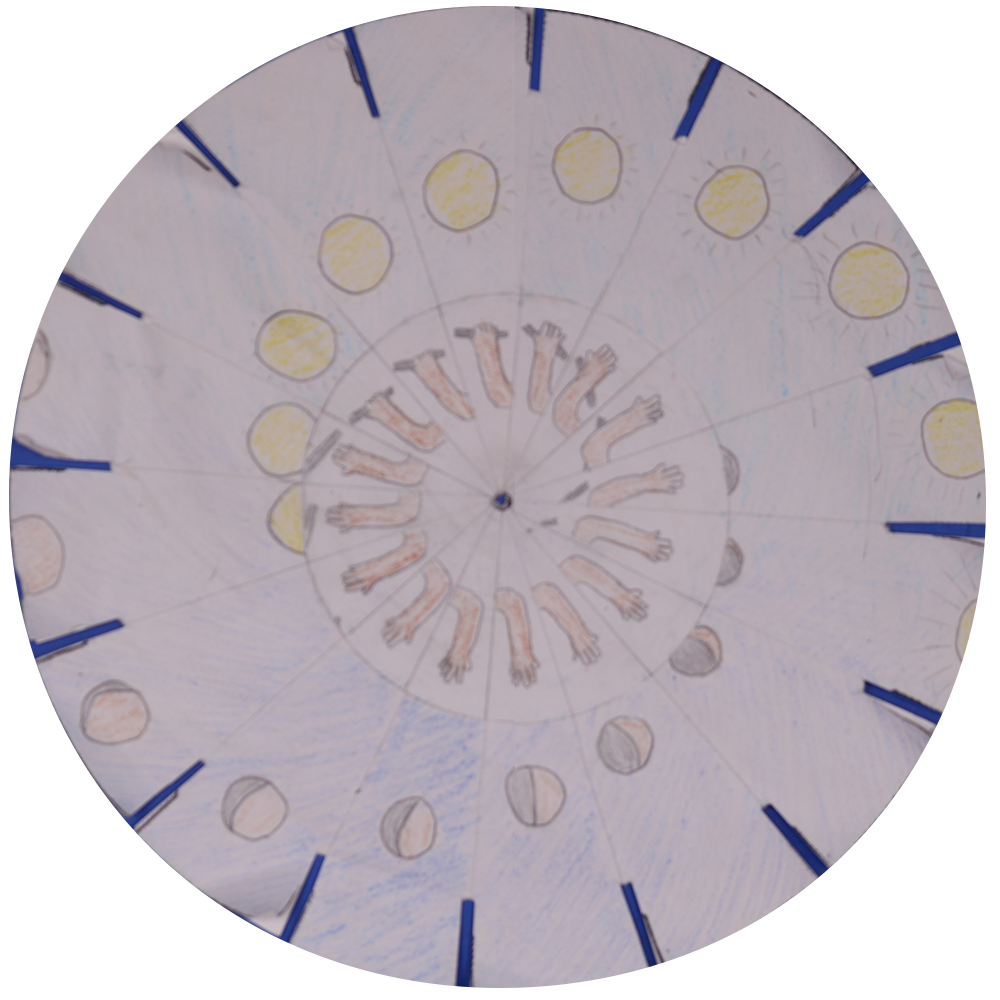


The second project was to make a zoetrope – one of those cylinders with images inside that you spin and look through slits in the side. I chose to animate some fire.

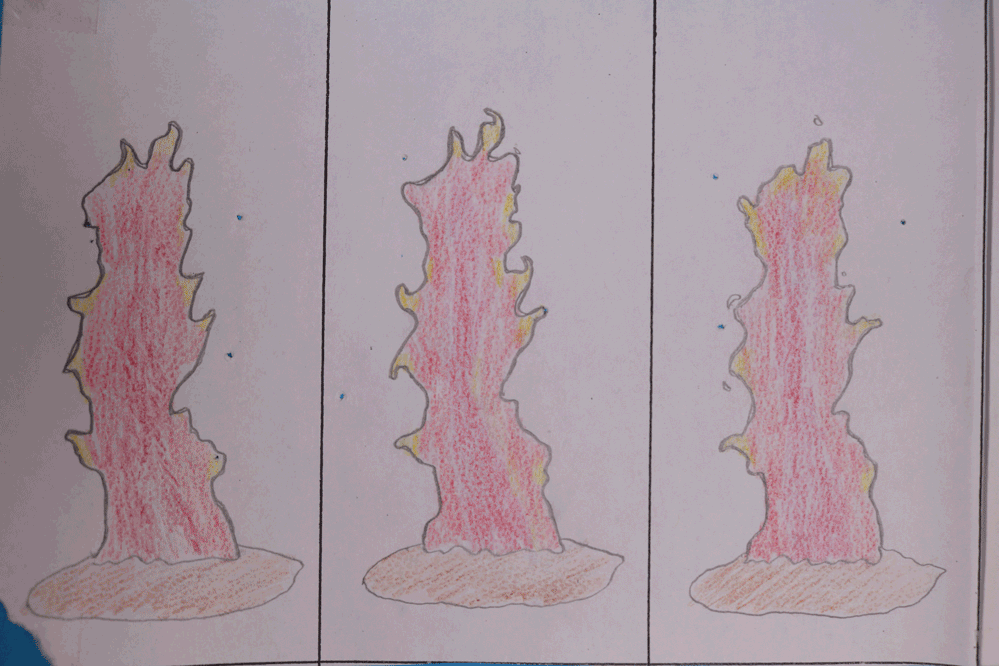
Our next project was to make a flipbook that showed an emotion using only simple and abstract shapes. This was our first animation that we did at a specific number of frames per second (which is always 12 for animation). I tried to show frustration.
The next project was an “exquisite corpse” animation, where each student was given 3 keyframes, sharing the first and last with the students in sequence before and after them, and animated between them. The result is a medley of different animation and drawing styles. My work is from 1:21 to 1:25.
Our next project was to use various different “direct techniques”, or methods of animating using traditional media. I used paper cutouts and whiteboard drawing. We had to use several of the principles of animation to make these, and used DragonFrame to do the stop-motion photography.
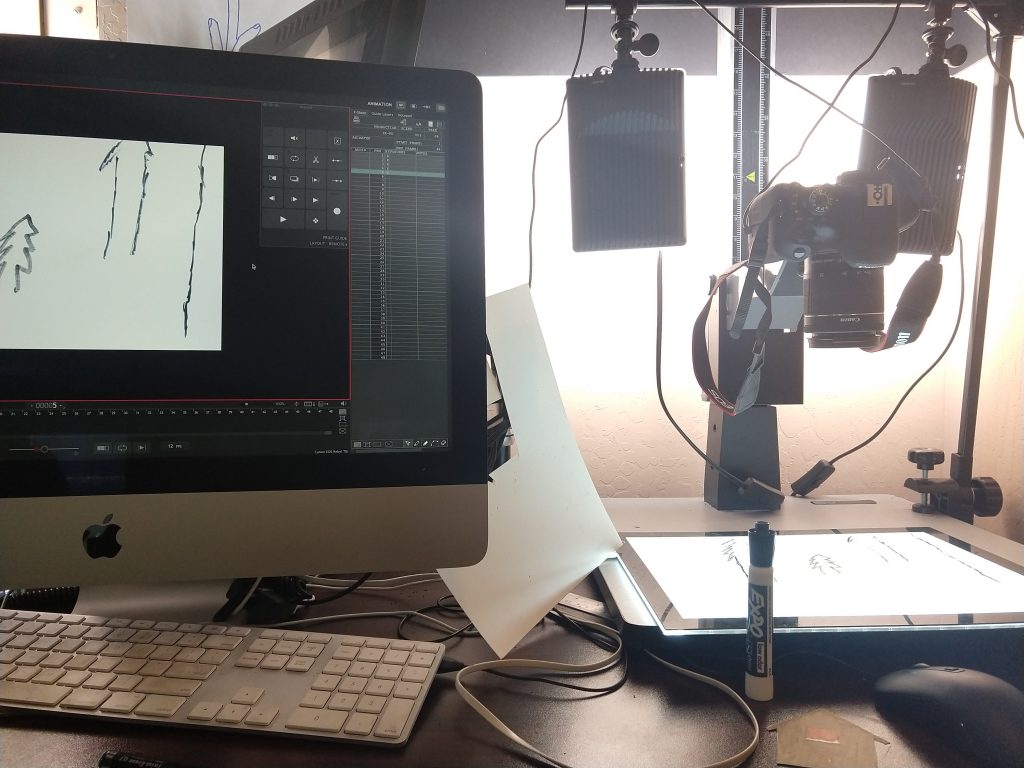
I’ve learned a lot about how to animate in this class (which is what I signed up to do), and I will likely use and build off of in the future. Learning how to draw better is a useful side effect as well. The atmosphere in the class is amazing. When we don’t have much to do (and sometimes when we’re just heavily procrastinating), we will watch movies, usually from Studio Ghibli, in part because the movies are just good, and in part so we can say we are studying good animation. Mainly, animation is just a fun class with fun people in it. And I, like any reasonable person, enjoy that. Even if the conversation takes a turn for the chaotic, as it normally does.
